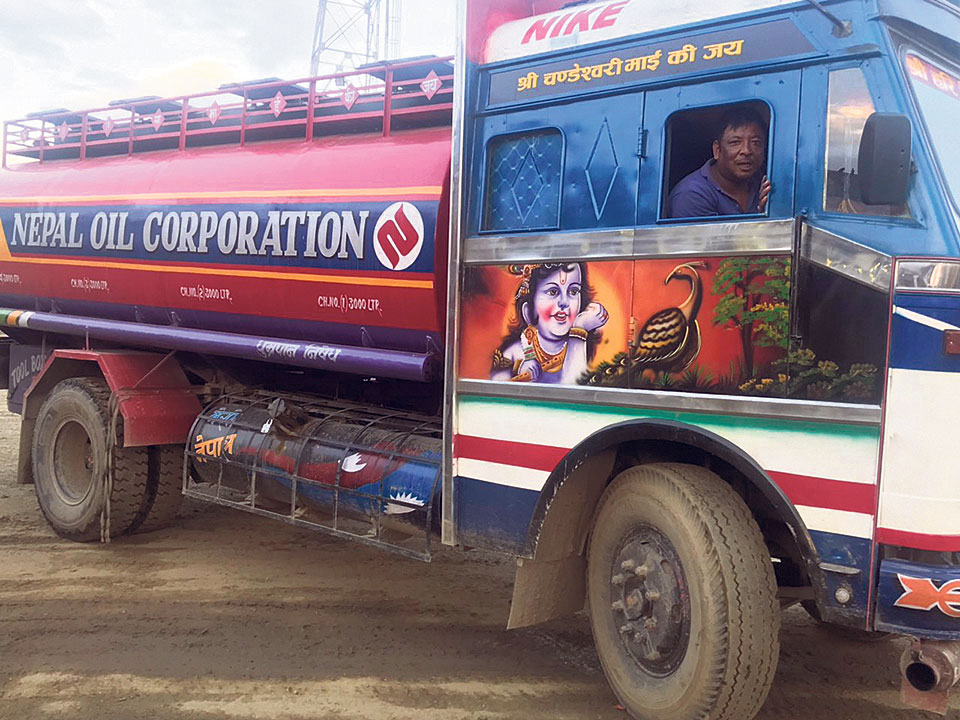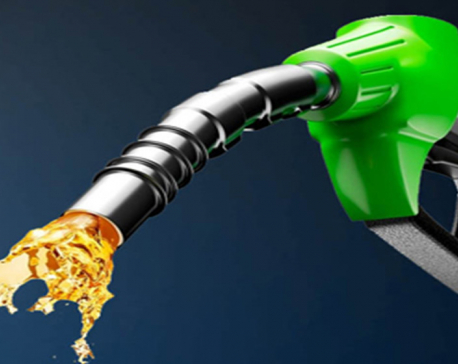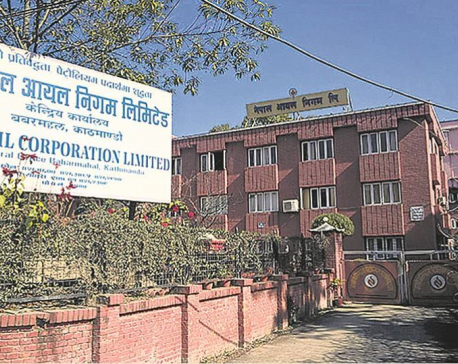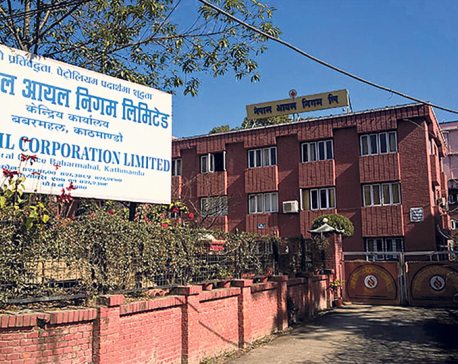
OR
Import bills for petroleum down by 16.6% despite 7% rise in quantity imported
Published On: November 25, 2019 08:54 AM NPT By: RAJESH KHANAL

KATHMANDU, Nov 25: Nepal spent 16.6% less in import of petroleum products in the first three months of the current fiscal year – FY2019/20 compared to the same period last year despite an increase in the import volume by 7%.
The three-month record of Current Macroeconomic Situation published by Nepal Rastra Bank shows that Nepal settled import bills of Rs 41.36 billion in mid July-mid October of 2019/20, down from Rs 49.58 billion of the review period in Fiscal Year 2018/19.
Despite a fall in the money value, the import volume, however, had gone up, shows the record of Nepal Oil Corporation (NOC). According to the state-owned oil monopoly, the import of fuels including petrol, diesel, kerosene, air turbine fuel and cooking gas increased to 789,144 kiloliters from 736,105 kiloliters during the period.
The imports figure is somewhat satisfactory if it is to consider the rate of fuel imports in the previous years. The central bank statistics show that the import expense of the first three months last year had escalated by whooping 71.2% in the review period of Fiscal Year 2018/19.
Nagendra Sah, deputy managing director at the NOC, said the import value could have been down due to the variation of the exchange rate of the Nepali currency against the US dollar. Last year, Nepali currency was heavily depreciated against the US dollar during the review period and had fallen to the record low of Rs 119.33 a dollar on October 10, 2018. However, in the first three months this year, the exchange rate hovered between Rs 110-Rs 115 a dollar, shows the central bank data.
Sah also attributed the fall in import value to the slump in oil prices in the international market. According to the NOC, price of crude oil in the international market had swelled to US$ 86 per barrel in October from $65 per barrel in July last year. However, the petroleum prices in the same period this year stood at around $ 67 per barrel.
The statistics of the government agencies reveals that the country has failed to benefit from increased power supply and elimination of years-long load-shedding. The share of import bills of petroleum products still accounts for 20% of the total imports worth Rs 207.41 billion, shows the central bank data.
In 2016, Nepal Electricity Authority declared end of scheduled power cuts in the households of the country, which was expected to result in a sharp fall in cooking gas imports due to increased consumption of power. In April 2018, the state-owned power utility also declared industrial areas free from power cuts, but this has also not resulted in a drop in the import of petroleum products.
The NOC records show that the import volume of all three major fuels inclined up in the first quarter. Over the period, import of petrol increased to 183,026 kl from 160,846 kl, diesel increased to 412,563 kl from 393,601 kl while import of cooking gas also surged to 127,628 tons from 116,546 tons.
According to Sah, demand for diesel is rising in the recent days mainly due to construction-related works in hydropower projects than the demand from industrial sectors.
You May Like This

10.5 million liters of fuel consumed in just one day with onset of Dashain
KATHMANDU, Oct 21: Nepal Oil Corporation (NOC) has stated that 10.5 million liters of petroleum products were consumed from various... Read More...

Govt collects Rs 100 billion through infrastructure tax imposed on fuel in past eight years
KATHMANDU, April 17: The government has collected more than Rs 100 billion in eight years from the infrastructure tax imposed... Read More...

Govt hikes prices of petroleum products, petrol will now cost Rs 170 per litre, diesel Rs 153 per litre
KATHMANDU, Feb 20: Nepal Oil Corporation (NOC) has again increased the prices of petroleum products. ... Read More...




Just In
- Govt receives 1,658 proposals for startup loans; Minimum of 50 points required for eligibility
- Unified Socialist leader Sodari appointed Sudurpaschim CM
- One Nepali dies in UAE flood
- Madhesh Province CM Yadav expands cabinet
- 12-hour OPD service at Damauli Hospital from Thursday
- Lawmaker Dr Sharma provides Rs 2 million to children's hospital
- BFIs' lending to private sector increases by only 4.3 percent to Rs 5.087 trillion in first eight months of current FY
- NEPSE nosedives 19.56 points; daily turnover falls to Rs 2.09 billion















Leave A Comment